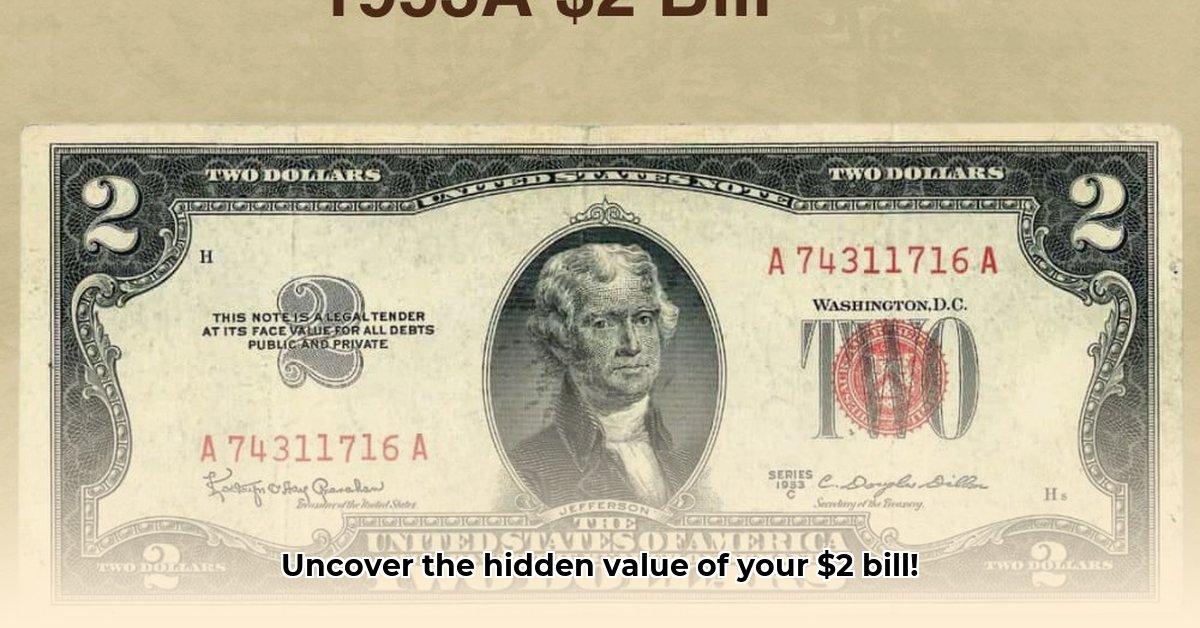
Identifying Your 1953 $2 Bill: A Collector's Guide
The 1953 $2 bill, notably absent the "In God We Trust" motto, is a fascinating collectible. Understanding its variations is key to assessing its value. Four series exist: 1953, 1953A, 1953B, and 1953C, each distinguished by subtle differences in the Treasury Secretary and Treasurer's signatures. High-quality images comparing these signatures are readily available online and are crucial for accurate identification. For more information on other historical bills, check out this helpful resource on 1963 $1 bills.
Beyond the series, a star (*) beside the serial number denotes a "star note," a replacement for a damaged bill, often increasing value. Even minor imperfections can impact worth, highlighting the importance of careful examination, perhaps with a magnifying glass.
Grading Your 1953 $2 Bill: The Sheldon Scale Explained
Collectors use the Sheldon Scale (1-70) to assess a bill’s condition. A grade of 70 represents a perfect, uncirculated bill, while a 1 indicates significant damage. The grade significantly influences value.
| Grade Range | Condition Description | Approximate Value Impact |
|---|---|---|
| 1-20 | Heavily worn, significant damage | Very Low |
| 21-40 | Well-circulated, noticeable wear | Low |
| 41-60 | Lightly circulated, minor wear | Moderate |
| 61-70 | Essentially uncirculated, like new | High to Extremely High |
Note that grading is subjective. Professional grading services, such as PCGS or NGC, provide objective assessments and certificates of authenticity, which are invaluable for establishing value and mitigating risk.
Determining Value: Factors Affecting Your 1953 B $2 Bill's Worth
Precisely pricing a 1953 $2 bill is challenging due to market fluctuations. However, several factors strongly influence its worth:
- Series: Rarity varies among the 1953, 1953A, 1953B, and 1953C series.
- Grade: Condition, as assessed by the Sheldon Scale, is paramount. A higher grade means significantly higher value.
- Star Note: The presence of a star (*) dramatically increases value.
- Serial Number: Unique or low serial numbers can enhance collectibility and, hence, value.
- Market Trends: Current demand influences pricing; what's popular today might not be tomorrow.
Online resources and price guides offer estimates, but remember these are approximations. Consulting experienced numismatists or checking recent auction results for comparable bills provides a more refined valuation.
Collecting Strategies: Building Your 1953 $2 Bill Collection
Acquiring 1953 $2 bills involves careful selection and secure storage. Reputable coin and currency dealers are the safest bet, avoiding potentially fraudulent online marketplaces. Always verify authenticity before purchasing. High-quality storage—acid-free sleeves and holders—protects the bill from environmental damage. Proper storage isn't just about preserving its condition but maximizing its future value.
Risk Mitigation: Safeguarding Your Investment
Counterfeit bills are a significant concern. Careful comparison with images of genuine bills and professional authentication adds a layer of protection. Market volatility is another risk; diversifying your collection helps minimize losses from price fluctuations. Incorrect grading can likewise impact value; always use reputable grading services.
Conclusion: Investing in History
The 1953 $2 bill presents a unique investment opportunity, blending historical significance with potential financial returns. By understanding its variations, properly grading its condition, and employing sound collecting strategies, you can meaningfully participate in this niche collecting area. Remember, thorough research and responsible practices are essential for both enjoyment and success in the numismatic world. Isn't it fascinating to consider the potential value hidden within a seemingly ordinary piece of currency?